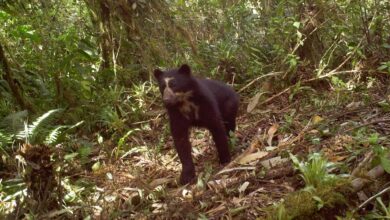
Release of the deer is credited with helping the 'extraordinary' recovery in Thailand's tiger population, which has increased almost fivefold in the last 15 years. Photo Credit: Handout / DNP/WWF-THAILAND/AFP
Animals ThailandExtraordinary Tiger Recovery, Thanks to Prey Release Program
In western Thailand, a prey release program has significantly contributed to the recovery of the endangered wild tiger population, increasing the number of big cats almost fivefold over the last 15 years.
“Since starting the project, we’ve seen tigers become regular residents here and successfully breed,” explains Worrapan Phumanee, a research manager for WWF Thailand. “The purpose of releasing deer is not solely to serve as tiger prey but also to restore the deer population.”
Thailand’s Western Forest Complex, which borders Myanmar, is home to a wild tiger population that has grown from 40 in 2007 to between 179 and 223 as of last year. As part of the release program, sambar deer are bred and released as prey for tigers to hunt and eat. The breeding and release of sambar deer also aim to solve the problem of ungulate population decline due to hunting. Despite having known only captivity, the deer possess a strong ability to adapt to external threats by evading predators and selecting safe areas to thrive. Over the past century, the global population of wild tigers has declined from approximately 100,000 individuals to 5,500, prompting the International Union for Conservation of Nature to classify tigers as endangered. Major tiger recoveries were recorded in India and Nepal, where, in recent years, the number of Bengal tigers reached 3,600 and 355, respectively. Prey release programs are part of a wider restoration project to rebuild ecosystems in Southeast Asia.



